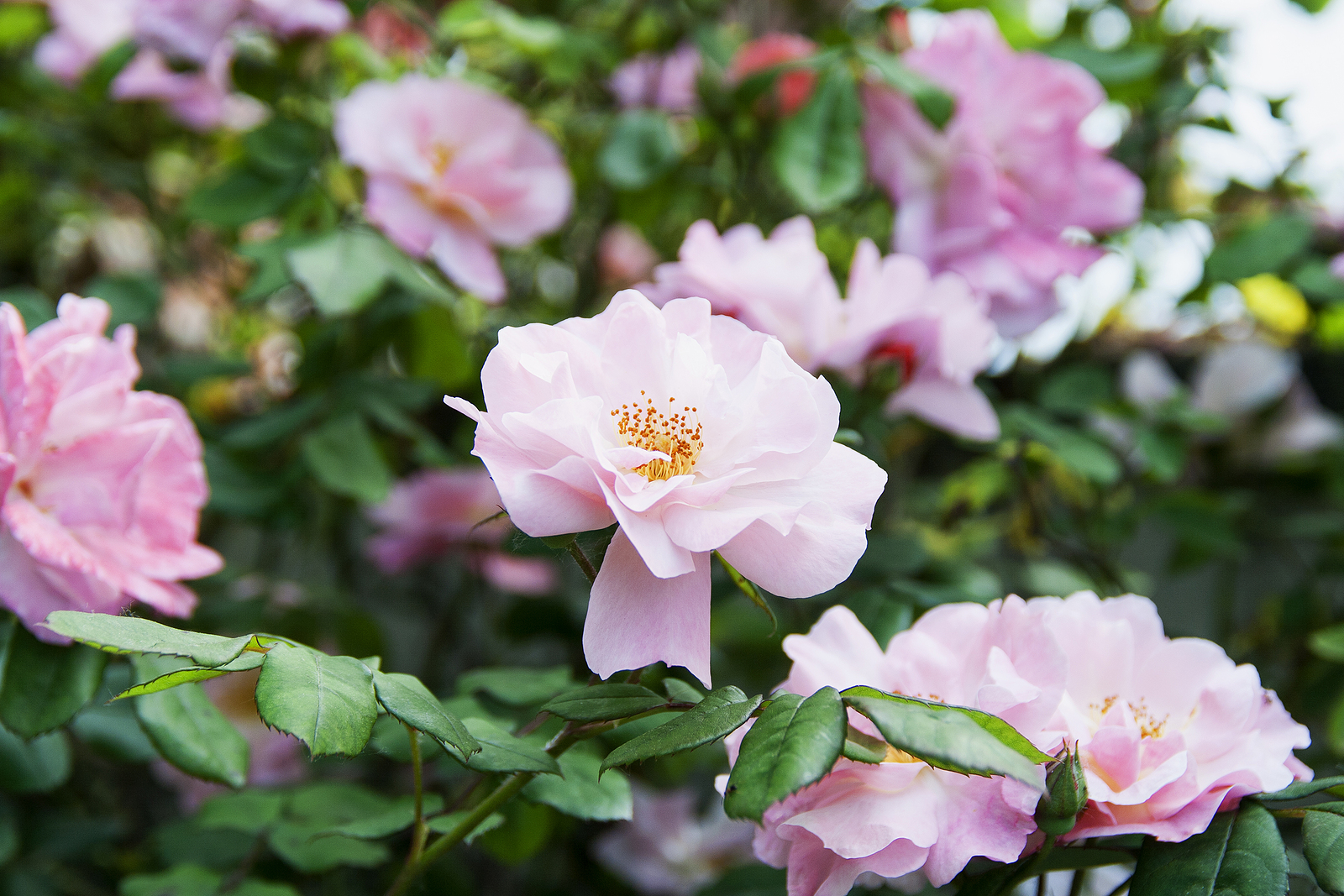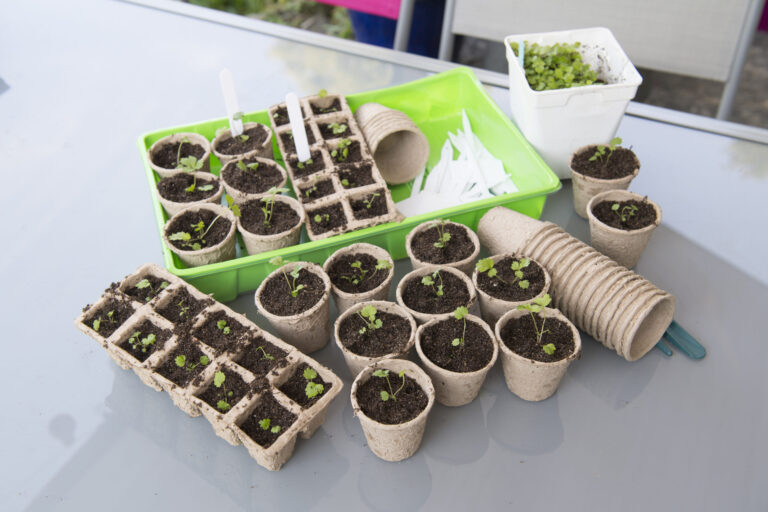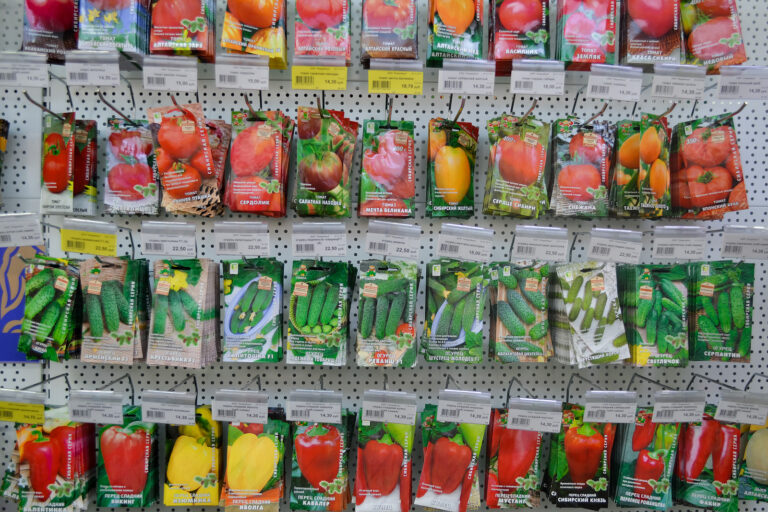April Flower Garden Tips Zone-by-Zone
Early to mid-spring is a time of transition in the garden. Weather extremes from snow to hot weather can occur in the Northern Hemisphere in April. In cold-winter regions, spring weather may still be several weeks away. In warm-winter regions, the last frost has already passed, and gardens are warming.
The timing of planting is important. Frost and cool weather can harm warm-season annuals and perennials set in the garden too soon. Cool-weather annuals can be planted in most region before the end of this month, but in southern regions where the last frost is long gone, it may be too late to plant out cool-season annuals. This month may be the time to get summer bloomers in the garden.
Here is a zone-by-zone to-do list for April. You’ll find planting and garden care tips for trees and shrubs, perennials, annuals, bulbs, the lawn, and container gardens for your region.
Use the USDA Hardiness Zone Map below to check your zone if you are unsure.
If you are unsure when the last frost in spring happens where you live–and when the first frost in autumn comes. Go to this post: Average Last and First Frost Dates for Cities, States, and Countries. The months between the last frost in spring and the first frost in autumn is the natural growing season for your region.
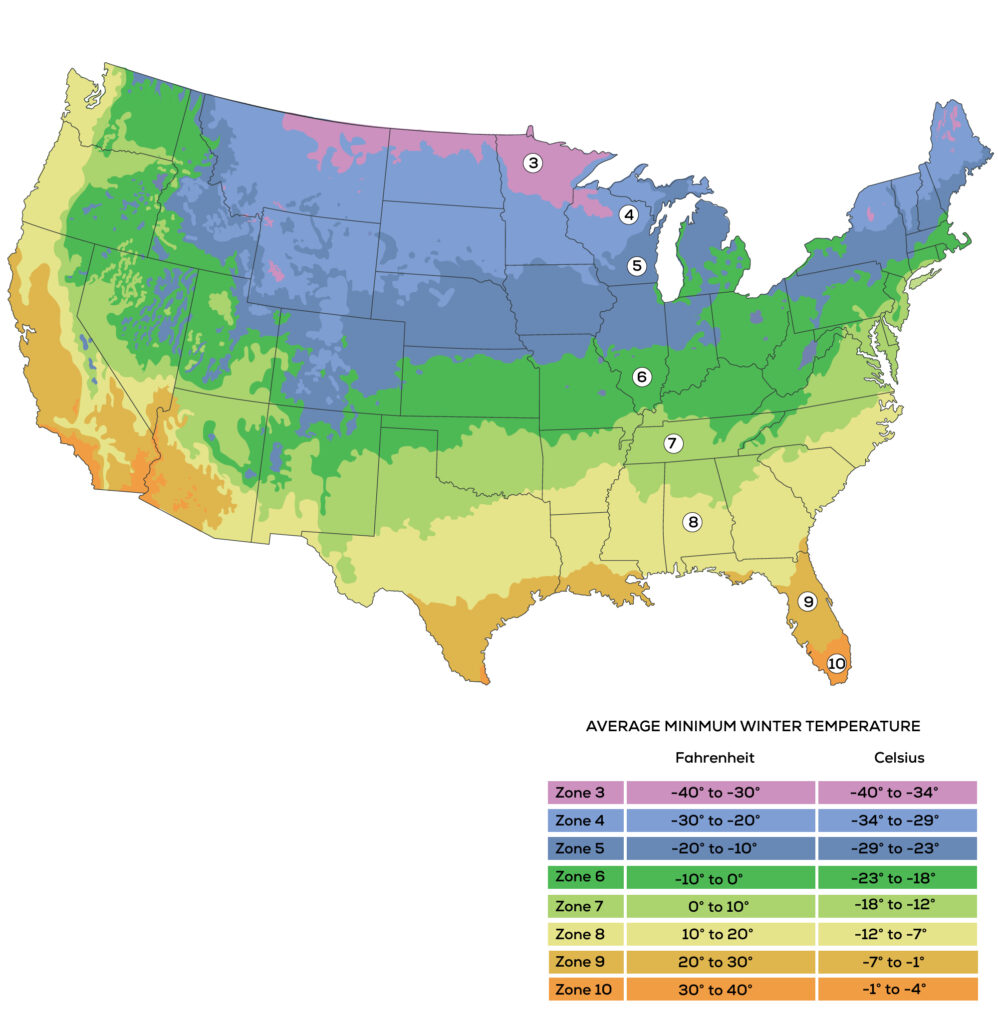
Tips for Zones 9-11:
General Tasks: Keep the garden free of weeds. Begin summer mulching of all beds, borders, shrubs, and trees. Use 2 to 3 inches (5-8cm) of aged compost or chopped leaves which will add nutrients to the soil. Turn the compost pile. Plant and stock the pond. Divide over-large pond plants.
Trees: Prune conifers in active growth. Prune spring-blooming trees after they finish flowering. Shear fine-needled evergreens. Transplant trees. Plant container and balled-and-burlapped trees. Install supports for newly planted trees. Water and mulch newly planted trees. Water established trees if the ground is dry. Fertilize newly planted and established trees when they begin to grow; use an all-purpose organic fertilizer. Weed the soil around trees and apply preemergent herbicide to keep new weeds from growing. Apply summer mulch of aged compost or leaf mold. Watch for pests and disease symptoms. Layer or take softwood cuttings from established trees.

Shrubs: Pick up dropped camellia flowers or other spent flowers littering planting beds. Prune any shrubs that were injured by freezes or damaged by wind during winter. Prune spring-bloomers when they finish flowering, rhododendrons, azaleas, and hedges. Prune shrubs grown for their decorative winter stems, such as willows and dogwoods. Prune Forsythia as soon as it has finished flowering. Prune summer- and autumn-flowering shrubs. Prune conifers in active growth. Shear formal hedges. Transplant established shrubs and plant container-grown stock and subtropical plants. Plant tropicals in a southern or eastern exposure where early morning sun does not shine on them (in the shade of building or tree). Plant palms before new growth starts. Plant new climbing shrubs. Plant allamanda and other flowering vines as shade screens for the deck, patios, and windows. Check supports for established climbing shrubs. Water and mulch newly planted shrubs. Feed after blooms have finished, spring-flowering azaleas and camellias. Fertilize new plants when they begin to grow. Mulch broad-leaved evergreens. Propagate shrubs by layering. Layer shrubs and climbers such as Carpenteria, Fothergilla, Magnolia soulangiana, Viburnum, Kalmia, Lonicera, Syringa, and Jasmine. Take softwood cuttings for propagation including Abutilon, Geranium, Fuchsia, and Vitex. Weed soil around shrubs. Water newly planted plants weekly, others as necessary. Check for insects and diseases.
Roses: Cut rose blossoms for fresh use or drying. Deadhead faded flowers; cut back to the nearest five-part leaf. Remove side buds to encourage large single blossoms or remove terminal buds to encourage clusters of blossoms. Remove suckers. Apply slow-release granular organic fertilizer after pruning. Apply supplemental liquid fertilizer monthly. Plant container-grown roses. Water weekly if the weather is dry. Mulch around roses to conserve soil moisture and keep weeds down. Watch for pests and disease symptoms. Spray for aphids. Begin spraying regularly with a fungicide. Watch out for mildew and black spot on roses. Install or repair supports for climbing roses.
Lawns and Ground Covers: Mow and edge the lawn as needed. Use a half-moon edger to neaten any ragged, squashed, or damaged lawn edges. Level off uneven areas of the lawn. Repair or replace worn-out or bare areas of turf. Thoroughly prepare the soil for lawn seed, spring, or sod. Sow new lawn from seed or turf. Lay sod; plant plugs. Water if the weather is dry. Fertilize lawn lightly again or top-dress with compost. Control lawn weeds; remove by hand, or use an appropriate weed killer. Prune straggly ground covers. Divide ground covers and perennial ornamental grasses. Plant ground covers and ornamental grasses. Fertilize established ground covers or top-dress with compost. Pull weeds from ground covers. Layer ground cover stem cuttings for propagation. Apply mulch for summer. Check for insects and diseases.
Perennials: Pinch annuals and perennials as needed to encourage compact growth. Disbud peonies. Divide and transplant summer- and fall-flowering perennials. Set out young perennials.Set indoor-started seedlings outdoors. Sow perennial seeds outdoors. Plant tropical and subtropical species. Plant out Antirrhinum and Penstemon raised from autumn cuttings or sowings. Make sure to harden them off gradually first. Plant chrysanthemums. Root chrysanthemum cuttings. Take root cuttings of Delphinium, Lupinus, and herbaceous Phlox. Take cuttings of abutilon, geranium fuchsia, vitex. Water if the ground is dry and when leaves are wilted. Thin out overgrown plantings and seedlings. Fertilize or top-dress with aged compost new plants as they begin to grow, established plants when shoots emerge from the ground. Provide stakes for tall plants. Watch for pests and signs of disease. Stake plants as they start to grow. Mulch beds and borders or keep weeded. Apply summer mulch.
Bulbs: Remove faded flowers and yellowed foliage from spring-flowering bulbs. Divide and transplant crowded clumps of spring bulbs when leaves yellow or mark where they are growing for division later in summer. Fertilize spring-flowering bulbs after they finish blooming with organic bulb food. Take note of places you want to plant bulbs in the fall and prepare orders. Plant summer-flowering bulbs including dahlias and gladiolus. Start tuberous begonias from tubers indoors. Start cannas from rhizomes indoors. Start dahlias from seeds or from tuberous roots indoors. Start tuberoses from tubers indoors. Plant ranunculus tubers. Later in the month make the second and third planting of gladioli. Place potted lilies outdoors. Watch out for thrips on gladiolus.
Annuals: Cut flowers for indoor displays. Deadhead faded flowers. Pull up winter annuals when plants are spent and add them to the compost pile. Pinch back tall growing plants. Direct-sow or transplant out tender annuals. Direct-sow annuals such as Linaria, ice plant, annual Rudbeckia, sunflowers, Tagetes, and stock. Plant out sweet peas raised in pots. Sow sweet peas where they are to flower. Sow hot-weather flowers such as celosias, sunflowers, portulaca, and zinnias. Set out bedding plants, such as asters, coreopsis, impatiens, and salvia. Thin seedlings. Train climbing annuals. Water and weed as needed. Feed outdoor plants with liquid fertilizer. Mulch flower beds with aged compost. Watch for pests and signs of disease. Place snail and slug bait and protect seedlings from birds. Combat pests and fungal disease using organic means, applying insecticides and fungicides only if necessary.
Container Gardens: Move tender plants brought indoors for winter back outdoors. Plant containers of summer annual flowers. Water container plantings as needed. Feed container plants with liquid fertilizer. Put supports in place for climbers. Watch for pests and signs of disease.
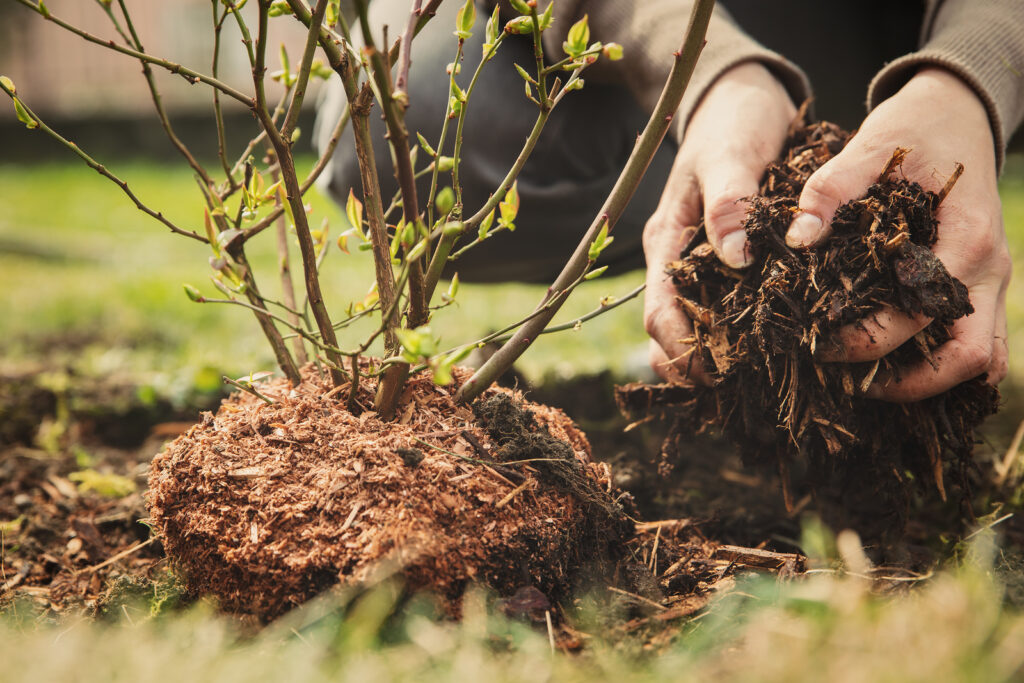
Tips for Zone 8:
General Tasks: Turn the compost pile. Repair fences, edging.
Trees: Prune trees; prune out winter damage. Prune away dead, broken, or diseased wood. Shear fine-needled evergreens. Fertilize trees with slow-release fertilizer as growth starts. Transplant trees. Plant container and balled-and-burlapped trees. Water and mulch newly planted trees. Mulch around trees with aged compost. Install supports for newly planted trees. Weed soil around trees, apply preemergent herbicide. Water established trees if the ground is dry. Watch for pests and disease symptoms
Shrubs: Mulch around camellias and other broad-leaved evergreens with aged compost. Prune shrubs; remove broken or dead wood. Shear formal hedges. Shear fine-needled evergreens as needed. Shear over winter-flowering heathers as they finish flowering. Prune spring-blooming shrubs when they finish flowering. Prune shrubs grown for their decorative winter stems, such as willows and dogwoods. Lightly prune shrubs such as Japanese quinces and early-flowering clematis have finished flowering. Hand prune forsythias after flowering and remove all flowered shoots. Hard prune Buddleia davidii and Hydrangea paniculata. Deadhead early-flowering azaleas and rhododendrons by hand. Divide multi-stemmed shrubs. Transplant shrubs. Plant new shrubs. Plant rhododendrons. Plant a hedge. Plant evergreen shrubs. Plant wall shrubs and tie them in. Plant climbers. Test soil pH around established shrubs and adjust, if necessary. Fertilize shrubs as growth starts. Fertilize spring bloomers such as azaleas and camellias after bloom. Apply a granular organic fertilizer around the base of summer-flowering shrubs. Propagate shrubs by layering and cuttings. Layer magnolias; new roots should form after one or two years. Layer shrubs and climbers such as Carpenteria, Fothergilla, Kalmia, Lonicera, and Syringa. Sever and replant rooted layers of forsythias. Water and mulch newly planted shrubs. Water if the ground is dry. Weed soil around shrubs. Mulch around shrubs with aged compost. Check supports for established climbing shrubs. Check for insects and diseases.
Roses: Complete all pruning tasks as soon as possible. Remove suckers. If late frosts have caused damage to new shoots, prune them back to an undamaged bud. Deadhead faded flowers; cut back to the nearest five-part leaf. Remove side buds to encourage large single blossoms or remove terminal buds to encourage clusters of blossoms. Disbud roses and other flowers for larger blooms. Plant container-grown roses. Install or repair supports for climbing roses. Tie new shoots of rambler and climbing roses to bamboo canes or wires; they will replace flowered stems in the autumn. Top-dress roses with compost. Mulch around roses with aged compost to keep down weeds and help them to retain moisture that will help them to resist attack from mildew during the summer. Avoid hoeing when weeds start to appear; control weeds by hand – rose roots are shallow and are damaged easily. Water newly planted roses thoroughly during dry weather. Water weekly if the weather is dry. Apply granular organic fertilizer after pruning. Fertilize roses when they start to grow; repeat monthly if using water-soluble fertilizer. Watch for pests and disease symptoms. Begin spraying regularly with a fungicide. Spray for aphids.
Lawns and Ground Covers: Cleanup lawn; aerate or de-thatch if necessary. Level humps in the lawn and fill in hollows. Remove persistent weeds by hand or use an organic spot treatment. Remove weeds such as dandelions. Repair lawn damage, fertilize with complete organic fertilizer and top-dress lawn with aged compost. Mow winter grass very close. Thoroughly prepare the ground to be seeded or sodded. Lay sod; plant plugs. Sow grass seed unless the soil is still very wet. Reseed patches suffering from bird damage, damping-off disease, or wear; top-dress with loamy soil or aged compost. Protect newly planted seeds from birds and water regularly. Mow the lawn when necessary. Continue mowing established and new lawns, gradually lowering the mower blades. Roll lightly to firm the surface if necessary. Avoid using lawn mowings as flower bed mulch; they often contain weeds seed with will germinate in the borders. Never mulch with mowings from lawns treated with weedkillers. Add them to the compost heap, but do not use the compost for at least six months. Prune ground covers and ornamental grasses. Divide ground covers and perennial ornamental grasses. Plant ground covers and perennial ornamental grasses. Fertilize established ground covers or top-dress with compost. Water if the weather is dry. Apply mulch for summer. Take ground cover stem cuttings for propagation. Layer ground cover stem cuttings for propagation. Check for insects, diseases.
Perennials: Divide and transplant summer- and fall-flowering perennials. Trim lavenders and other woody perennials to shape. Lift and divide and replant healthy outer sections of bergamot, Heleniums, Michaelmas daisies, rudbeckias, and perennials sunflowers. Edge beds and borders. Remove winter mulch. Complete bed preparation for planting. Plant late-flowering perennials. Plant container-grown perennials. Plant bare-root perennials. Plant out Antirrhinum and Penstemon raised from autumn cuttings or sowings. Make sure to harden them off gradually first. Take root cuttings of delphinium, lupines, and herbaceous Phlox. Sow perennial seeds indoors. Set seedlings outdoors. Root chrysanthemum cuttings. When mums are six inches high, pinch back tips. Fertilize or top-dress with compost new plants as they begin to grow, established plants when shoots emerge from the ground. Water if the weather is dry and if leaves are wilted. Stake plants as they start to grow. Stake delphiniums, pinks, and other tall or weak-stemmed perennials. Add aged compost mulch to beds and borders. Watch for pests and signs of disease. Watch out for pests, especially aphids and slugs, and take speedy action.
Bulbs: Encourage foliage of spring-flowering bulbs to remain green as long as possible; water and fertilize them. Remove faded flowers from spring-flowering bulbs. Continue to remove faded flowers from narcissi and tulips. Fertilize spring-flowering bulbs when blooms have faded. Do not trim or cut bulb foliage until it turns yellow. Set out annual flowering plants to conceal maturing foliage. Divide and transplant crowded clumps of bulbs when leaves yellow. Mark clumps of daffodils and other spring bloomers that have ceased to bloom because they are crowded. Dig these and replant them in mid-summer. Take note of places you want to plant bulbs in the fall and prepare orders. Plant gladioli and summer-flowering bulbs; fertilize when shoots appear. Continue succession plantings of gladiolus corms every two weeks from the first planting, for six weeks. Plant ranunculus tubers. As soon as the soil warms up, plant tuberous begonias and other tender summer-flowering bulbs and corms. Caladiums should not be set out until temperature remains about 40°F (4.4°C) around the clock, as they are damaged at lower temperatures. Start tuberous begonias from tubers indoors. Start cannas from rhizomes indoors. Start dahlias from seeds or from tuberous roots indoors. Towards the end of the month, in mild, sheltered gardens plant out outdoor dahlia tubers and arum lilies. Pot up rooted dahlia cuttings and gradually harden them off. Start tuberoses from tubers indoors.
Annuals: Prepare and fertilize the soil of flower beds as soon as the ground can be worked. Start hardy and tender annuals indoors or in a cold frame before planting them outdoors. Wait to direct-sow or transplant out tender annuals until the danger of frost is past. Sow indoors warm-season annuals such as celosia, zinnias, petunias, busy lizzies, and sunflowers. Plant outdoors sweet peas and other cool-season annuals raised in six-packs or pots. Sow sweet peas where they are to flower. Place snail and slug bait out and protect seedlings from birds with row covers or netting. Combat pests and fungal disease using organic means, applying insecticides and fungicides only if necessary.
Container Gardens: If not already done, prepare empty containers for spring planting. Plant containers with cool-season annuals. Deadhead cool-season bedding plants and early-flowering bulbs as the flowers fade. Prune shrubs in containers after flowering to maintain shape. When the danger of frost is past, plant tender annuals in containers and move tender plants brought indoors for winter back outdoors; this may not happen until next month if the weather remains cool. Water new plantings as needed. Feed plants in containers with liquid fertilizer. Keep plants in containers protected against slugs and snails. Look out for early aphids and spray if necessary.
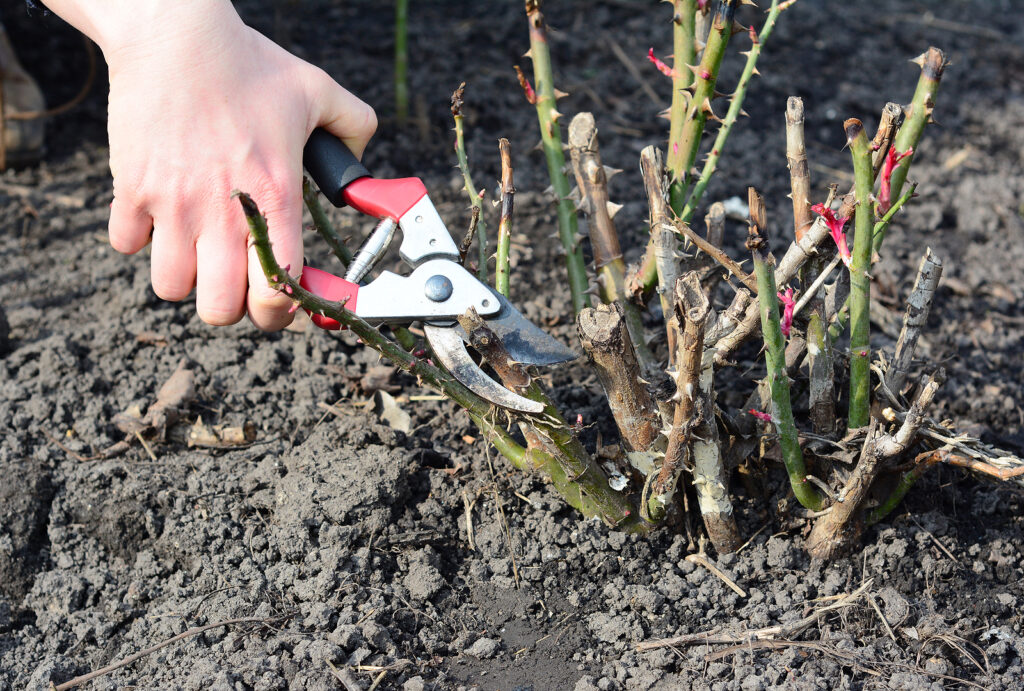
Tips for Zones 5-7:
General Tasks: In cold regions, the weather can still be frosty and icy in early spring, but in mild regions, you can make a start on many outdoor jobs. If sowing or planting outdoors, bear in mind that the soil temperature, as well as air temperature, is important. Few seeds will germinate if the soil temperature is below 45°F (7°C), so use a soil thermometer to check before you sow. Spray with insecticides and fungicides if needed. Turn the compost pile. Repair fences and edging on mild days.
Trees: Prune shade trees and summer- and autumn-flowering trees. Prune out winter damage. Transplant trees. Transplant evergreens. Plant bare-root trees. Plant container and balled-and-burlapped trees. Install supports for newly planted trees. Water and mulch newly planted trees. Fertilize established trees. Fertilizer newly planted after trees after roots are established and they begin to grow. Watch for pests and disease symptoms. Take hardwood cuttings for propagation.
Shrubs: Spring prune shrubs. Prune summer- and autumn-flowering shrubs. Prune out winter damage. Prune spring-blooming shrubs when they finish flowering. Train and prune vines. Check supports for established woody climbing shrubs. Divide multi-stemmed shrubs. Remove undesirable shrubs. Test soil pH around established shrubs and adjust, if necessary. Transplant shrubs. Finish planting bare-root shrubs. Plant balled-and-burlapped and container-grown stock. Plant new climbing shrubs. Water and mulch newly planted shrubs. Fertilize shrubs as growth starts. Fertilize established shrubs and vines; fertilize new plants after roots are established and they begin to grow. Feed all plants soon to bloom as new growth starts; feed azaleas, camellias, rhododendrons, Pieris japonica, hollies, and Leucothoe. Replace mulch as needed. Start grafts for propagation. Propagate shrubs by layering. Watch for pests and disease symptoms. Apply horticultural oil spray as needed.
Roses: Remove winter protection from roses. Prune roses. Prune hybrid bush roses, cutting out any frost-damaged, dead, or crossing stems. Transplant any roses that need to be moved. Plant bare-root and container-grown roses. Fertilize roses when they start to grow; repeat monthly if using water-soluble fertilizer. Water roses weekly if the weather is dry. Mulch newly planted roses. Watch for disease symptoms when leaves begin to grow. Spray for aphids. Test soil pH; adjust if necessary. Install or repair supports for climbing roses.
Lawns and Ground Covers: Rake the lawn clear of twigs, leaves, and other debris that may be clogging the surface. Brush off worm castings regularly. Finish lawn cleanup; aerate, de-thatch if necessary. Begin mowing the lawn when the grass is three inches high. Mow and edge the lawn as needed. To prevent scalping, cut the lawn with lawnmower blades set reasonably high. Neaten lawn edges with edging shears. Fertilize the lawn if one yearly feeding is needed. Sow grass seed; lay sod; plant plugs. Prune ground covers. Prune or shear off damaged branches. Press into soil any plants that have heaved from the ground. Divide ground covers and perennial ornamental grasses. Thin overcrowded plantings of ground covers. Cut back perennial grasses to within 6 inches (15cm) of the ground. Plant ground covers and perennial ornamental grasses. Start seed of ground covers and ornamental grasses indoors. Fertilize ground covers and ornamental grasses lightly or top-dress with compost. Water if the weather is dry.
Perennials: Remove winter mulch. Dig, divide, and transplant crowded clumps of summer and fall bloomers. Lift, divide, and replant established or oversized herbaceous plants, discarding any weak sections. Complete bed preparation for planting. Plant summer-flowering perennials if the ground is not frozen or waterlogged. Plant container-grown perennials. Plant bare-root perennials. Fertilize or top-dress with compost new plants as they begin to grow, established plants when shoot emerge from the ground. Stake tall plants as they start to grow. Watch for pests and signs of disease. Sow perennial seeds indoors.
Bulbs: Remove faded flowers and yellowed foliage from spring-flowering bulbs. Fertilize bulbs as they finish blooming; deadhead spent flowers, but leave the foliage in place. Set out annual plants to conceal maturing bulb foliage. Lift, divide, and replace crowded clumps of bulb plants as soon as the flowers have faded. Mark clumps of flowering bulbs so crowded they have ceased to bloom freely. Dig and replant these in mid to late summer. Take note of places you want to plant bulbs in the fall and prepare orders. Prepare soil for planting. Test soil pH; adjust if needed. Plant forced bulbs outdoors. Plant gladiolus every two to three weeks. Begin planting dahlias. Continue succession plantings of gladiolus corms every two weeks from the first planting, for six weeks. Start tuberous begonias from tubers indoors. Start cannas from rhizomes indoors. Start dahlias from seeds or from tuberous roots indoors. Start tuberoses from tubers indoors.
Annuals: Protect tender annuals from unexpected frosts if needed. Prepare and fertilize the soil of flower beds as soon as the ground can be worked; turn the soil over, remove weeds, and add slow-release organic fertilizer before planting annuals. Direct sow or set out transplants of hardy and half-hardy annual flowers. Sow sweet peas. Make sure sweet peas already in the ground have supports. Care for plants started from cuttings and seeds now growing indoors. Water plants as necessary.
Container Gardens: Plant container plantings for decks, patios, and other places. Begin planting containers of cold-tolerant annuals, small shrubs, and small trees. Check tender container plants moved indoors for winter; move the outdoors after danger of frost is past.
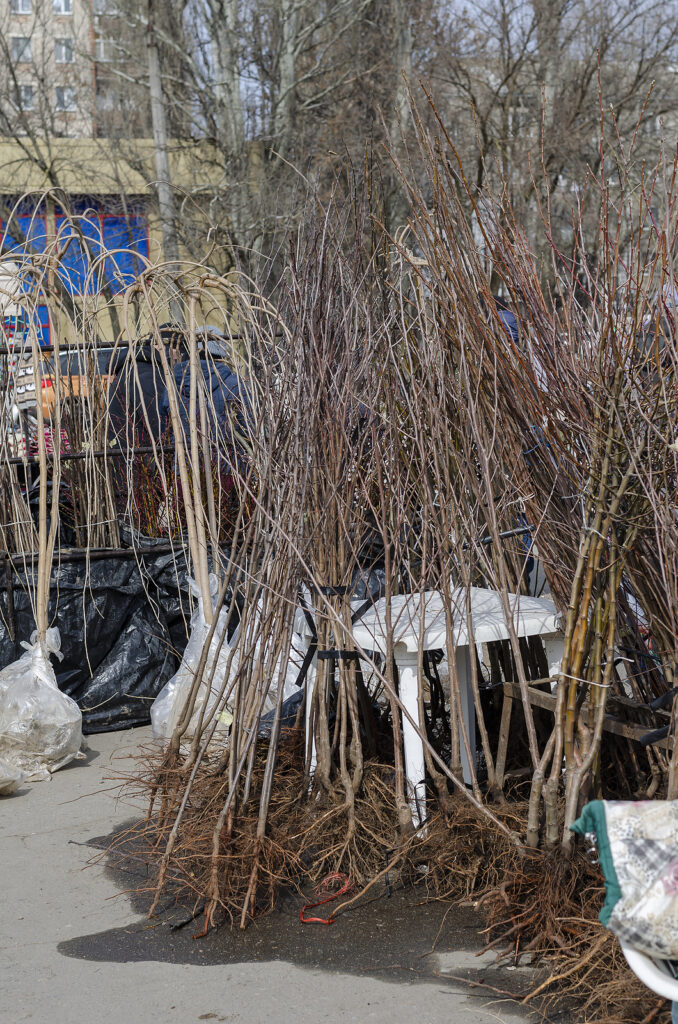
Tips for Zones 1-4:
General Tasks: On the first warmer days, do not make the mistake of uncovering plants until sure that there will be no more nights of a hard freeze. Once freezing weather has passed, remove winter protection from planting beds as growth starts. Prepare the soil for planting when it becomes workable. Add aged compost or organic all-purpose fertilizer to beds. Test soil pH and adjust if needed. Keep the garden free of weeds. Order seeds, bulbs, and plants for the coming season.
Trees: Begin planting bare-root stock as soon as the soil is workable. Plant container and balled-and-burlapped trees. Water newly planted and install supports. Transplant evergreens. Prune conifers. Prune shade trees and summer- and autumn-flowering shrubs and trees when new growth is visible. Take hardwood cuttings for propagation.
Shrubs: Begin planting bare-root shrubs, balled-and-burlapped, and container-grown shrubs as soon as the soil is workable.Plant new climbing shrubs. Move established shrubs as necessary. Remove undesirable shrubs. Water and mulch newly planted shrubs. Check supports for established climbing shrubs. Cut back to the ground root-hardy, top-tender shrubs like buddleias, hydrangeas, and caryopteris. Prune Cornus that have brightly colored winter stems. Divide multi-stemmed shrubs. Protect delicate shrubs from last frosts. Propagate shrubs by layering when the soil is workable.
Roses: Gradually unhill or remove winter protection covering roses as the soil thaws. Plant bare-root roses as soon as the soil is workable; mound soil 6 to 12 inches (15-30cm) high around the base of newly planted roses, remove the soil when plants start growing. Plant container-grown roses. Transplant any roses that need to be moved. Watch for disease symptoms when leaves begin to grow. Begin pruning roses by the middle of the month. Apply granular organic fertilizer after pruning. Water as necessary. Install or repair supports for climbing roses. Mulch newly planted roses. If roses are still completely dormant, apply a dormant spray. Start the summer spray program as soon as new leaves appear.
Lawns and Ground Covers: Keep off the grass if it is frozen; foot traffic damage encourages the onset of diseases. Lawns can be treated with needed soil amendments (lime or sulfur) as soon as snow melts. Apply pre-emergence weed killer-fertilizer one week later. De-thatch lawn if necessary when the lawn is dry enough to walk on. Prepare new lawn areas as soon as the ground can be worked. Seed new lawns when soil is workable. Top-dress the lawn with aged compost when it begins to grow. Service your mower or have it done professionally. Start seed of ground covers and ornamental grasses indoors. Prune and clean winter-damaged branches from groundcovers. Thin overcrowded plantings of groundcovers. Press into soil any plants that have heaved from the ground.
Perennials: Sow indoors a selection of herbaceous perennials to incorporate into your flower borders in the spring. When soil becomes workable, dig and divide summer bloomers. Complete bed preparation for planting. Plant bare-root perennials. Divide and transplant overcrowded perennials.
Bulbs: Gradually remove mulch when the shoots of early bulbs being to grow. Fertilize spring bulbs, as growth gets underway. Remove mulch as shoots of bulbs push through the soil. Transplant and divide early flowering bulbs. Start tuberous begonias from tubers indoors. Start cannas from rhizomes indoors. Start dahlias from seeds or from tuberous roots indoors. Start tuberoses from tubers indoors. Check dahlias in storage and remove any that are showing signs of rotting. Plan to plant gladioli, anemones, lilies, and Ranunculus outdoors after the last frost.
Annuals: Sow annual, biennial, and perennial seeds indoors. Sow hardy and half-hardy annual flower seeds outdoors. Direct seed poppies, alyssum, bachelor’s buttons, cosmos, and calendulas anytime (they don’t mind chilly soil). Direct-sow sweet peas as soon as the soil is workable. Sow tender annuals indoors. Care for plants started from cuttings and seeds now growing indoors. Prepare and fertilize the soil of flower beds as soon as the ground can be worked. Weed flower beds.
Container Gardens: Check tender container plants moved indoors for winter. You can move them back outdoors after the last frost.

